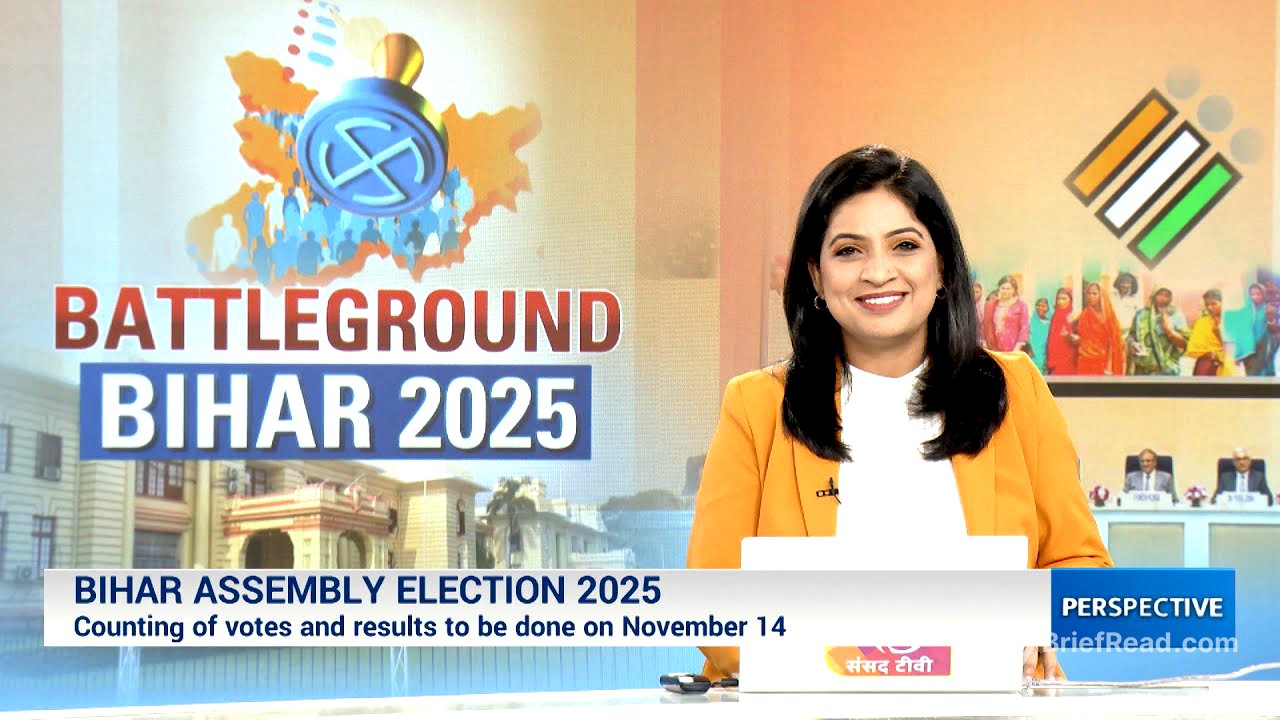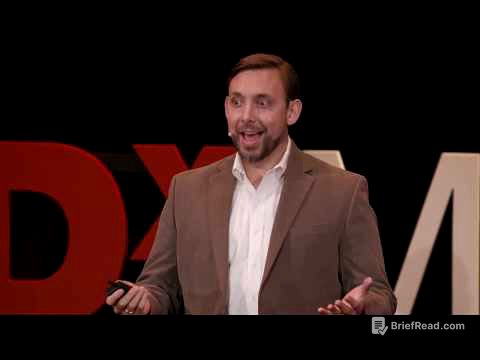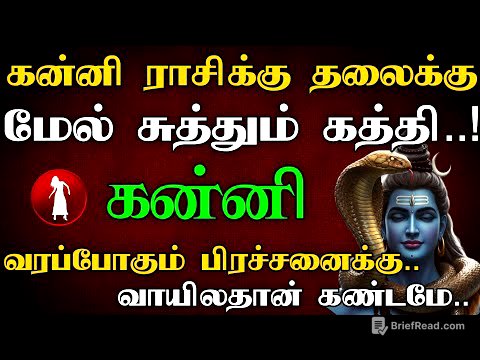TLDR;
The discussion revolves around the upcoming Bihar assembly elections, focusing on the key players, social dynamics, and potential outcomes. Experts analyse the influence of cast arithmetic, the role of youth and women voters, and the impact of new entrants like Prashant Kishor. The ruling NDA's strengths and the opposition's challenges are examined, along with the significance of Prime Minister Modi's campaigning. The experts also touch upon the potential for a change in leadership post-election, highlighting development as a crucial factor for voters.
- Cast dynamics remain significant but developmental issues are gaining traction.
- Youth and women voters are crucial demographics that could swing the election.
- Prashant Kishor's impact as a disruptor is debated, with potential to draw votes from both alliances.
- NDA has an edge due to a cohesive coalition and the influence of PM Modi.
- Opposition needs to address development issues to resonate with voters.
Introduction to Bihar Elections [0:10]
Tina Ja introduces the topic of the Bihar assembly elections, highlighting the two-phase voting schedule on November 6th and 11th, with counting on November 14th. She mentions that over 7.42 crore voters are eligible, including 14,000 centenarians. To ensure transparency, webcasting will be available at all 90,712 polling stations. She also points out the complex social and political fabric of Bihar, with its population sharply divided along cast lines, and introduces the key political players: the ruling NDA and the opposition Mahagat Bandhan.
NDA's Strengths and Social Coalition [1:34]
The NDA comprises the BJP, JDU, LJP, and HAM, drawing strength from diverse social bases. Nitesh Kumar's JDU relies on the EBCs, the BJP on the upper casts and non-Yadav OBCs, the LJP on the Paswan community, and the HAM on the Musar Dalits. The opposition Mahagat Bandhan, led by the RJD, Congress, VIP, and left parties, counts on the Muslim and Yadav populations as their traditional backbone. The VIP appeals to the Kushwahas, while the Congress taps into segments of the OBCs, the upper class, and urban voters. Asaduin OC's AIM holds sway in the Simanchal region, and Prashant Kishor is contesting on all 243 seats, aiming to disrupt traditional equations in Bihar.
Ground Reality and Voter Sentiment [3:06]
Kumar Rakkesh says that it's difficult to gauge whether people are looking for continuity or change. He recalls the 2024 Lok Sabha elections where the NDA won 30 out of 40 seats despite some vote erosion. Drawing parallels with assembly elections in Haryana and Maharashtra, he suggests the NDA has an advantage due to its diverse social coalition. He notes that Chak Paswan is in the NDA camp this time, and despite losing Vikasan party to the RJD alliance, the NDA alliance appears more cohesive on paper. Seat sharing talks are underway.
Cast Dynamics vs. Development [4:48]
Professor Sunil Chri says that while cast is a primordial identity, developmental discourses seem to be overtaking it. He categorizes Bihar voters into X factors (migrant voters, Muslim voters, and Mahila voters) and Y factors (Jan Suraj party led by Prashant Kishor and Jan Shaki Jantaa Dal led by the Yadav group). He believes that developmental discourse and governance will shape the current elections more than cast.
Other Social Formations and Key Factors [7:23]
Professor Mano Singha says that cast hasn't gone away from Bihar elections and won't for some time. He emphasizes the significance of women voters, noting that Prohibition was a reason they supported Nitish Kumar in the past, and he sees continuity in this election. He also highlights the youth vote and how they might swing towards Prashant Kishor, potentially drawing from across cast lines. He notes that Chiakat Paswan being with the NDA will make a 3 to 5% difference, bringing in not only Paswan community votes but also allied communities. He estimates that NDA has an edge.
Prashant Kishor's Potential Impact [11:48]
Mr. Rakkesh believes Prashant Kishor will be a disruptor. He acknowledges Kishor's strengths as a self-made Bihari who has successfully worked with different political parties. Kishor has tried to set a cast-neutral agenda, focusing on substantive matters. However, Bihar's electoral history makes it difficult for a new party to make major gains in the first election. Rakkesh argues that Kishor will draw votes from different sections of society, potentially damaging the NDA more than the RJD alliance.
New Entrant's Influence and Anti-Incumbency [13:58]
Professor Chri says that Prashant Kishor is a good psychologist but converting voters depends on a strong organizational structure, which Jan Suraj party lacks. While Kishor has been campaigning rigorously and may be popular, it's difficult to say if his party will get enough seats to be in a position of power. He believes Kishor will dent votes from both the Mahagat Bandan and NDA, especially among the youth. However, the BJP has also been wooing young voters with developmental schemes, and PM Modi's rallies could sway fence-sitters back to the NDA.
Prime Minister's Role and Influence [17:05]
Professor Sha says that the Prime Minister is the "tadka" that comes after the rest of the food is served, still holding a lot of influence and able to convince people. Despite some setbacks in the Lok Sabha elections, his power to convince people about the developmental agenda and the partnership with Nitish Kumar gives them an edge over the alternatives. He believes the Congress and RJD combined are not able to convince people that they can bring the kind of development Bihar needs. He also agrees that Prashant Kishor's impact will be across parties and doesn't see him winning, suspecting he may not be able to convert support into actual votes.
RJD's Stakes and Challenges [20:06]
Rakkesh says that there is more at stake for the opposition than the NDA. The NDA can live with one defeat, but the opposition is increasingly staring at electoral irrelevance. If RJD loses again, it will suggest they are unable to get rid of the baggage of misgovernance and jungle laws from their 15-year rule. Another loss will be a big setback, proving that the opposition is disconnected from the ground despite making noise and grabbing headlines.
Nitish Kumar Factor and Silent Voters [22:38]
Professor Chri says that Nitesh Kumar has impeccable leadership and no corruption charges against him. Despite initial differences among NDA constituents, there is unanimity on the CM face. He says Bihar electors are silent voters, very vocal, credible, and visible. The youth voters, constituting around 50% of the population, will have a decisive impact without being expressive, appearing to be moving towards the governance and development agenda of NDA. He believes NDA constituents are cohesive and unanimous on their chief ministerial face, with BJP repeatedly stating they are contesting under Nitesh Kumar's leadership.
Closing Comments and Predictions [25:28]
Professor Jooshi predicts that even if the NDA wins, Nesh Kumar will probably not complete the whole term, suggesting a change of some kind in between. He says the opposition lost the plot by not raising issues that would have made a difference, as Bihar is starved of development and voters are looking for jobs. He criticizes the opposition for picking up non-issues like "vote fury" and "sir." He suspects that Prashant Kishor may not be able to convert support into actual votes, and the person of the Prime Minister and the current CM will probably carry the NDA through.









